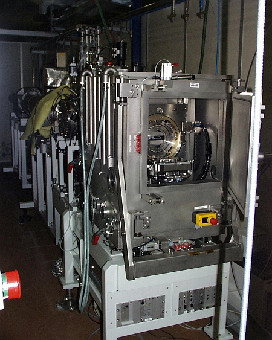Deep X-ray lithography synchrotron radiation (DXRL)
of TU Graz at Elettra Sincrotrone Trieste
Deep X–Ray Lithography (DXRL) is a manufacturing process by which a material that changes its dissolution rate in a liquid solvent (developer) under high energy irradiation, is exposed through an X-ray mask to synchrotron radiation. The pattern of the mask is transferred to the material. This is possible through the availability of synchrotron radiation characterized by high resolution, high intensity and extreme parallelism. Microstructures have been obtained with high spatial resolution (200 nm for a wall thickness of 100 µm), high aspect ratios (up to 40), great structural heights (up to 3 mm) and parallel edges.

DXRL is thus a key technique to fill the gap between the nano/bio scale (current target of cutting edge studies) and the macroscale, with the fabrication of microdevices (i.e. microfluidic circuits) that allow the manipulation and analysis of nano-sized objects. Since the beamline performs irradiation of samples with controlled X-ray doses, it can be used for radiation assisted material synthesis and processing, allowing the patterning of new functional materials that can become the components of new generation lab on chips. Moreover, there is the possibility of fabricating micromolds or microelectrodes for the production of small batches of microdevices. All this makes DXRL suitable for industrial applications.
Contact: Benedetta Marmiroli
Tel: +39 040 375 8708 (office) | +39 040 375 8076 (beamline)
Technical specifications and sample environment.
The beamline is equipped with a DEX02 Jenoptik scanner, which allows a fully automatic exposure procedure, a scanning speed ranging from 1-50 mm/s, the irradiation of 4 inch masks and resist substrates (water cooled), horizontal and vertical apertures and an exposure area of 54×84 mm. A set of 5 filters permits a tailored hardening of the beam in order to have a better dose contrast, especially for thick resists. The exposures can be performed at a slight vacuum in a helium or nitrogen atmosphere. Specific sample holders have been designed for powder irradiation.
Detailed information can be found on the beamline’s main homepage.



